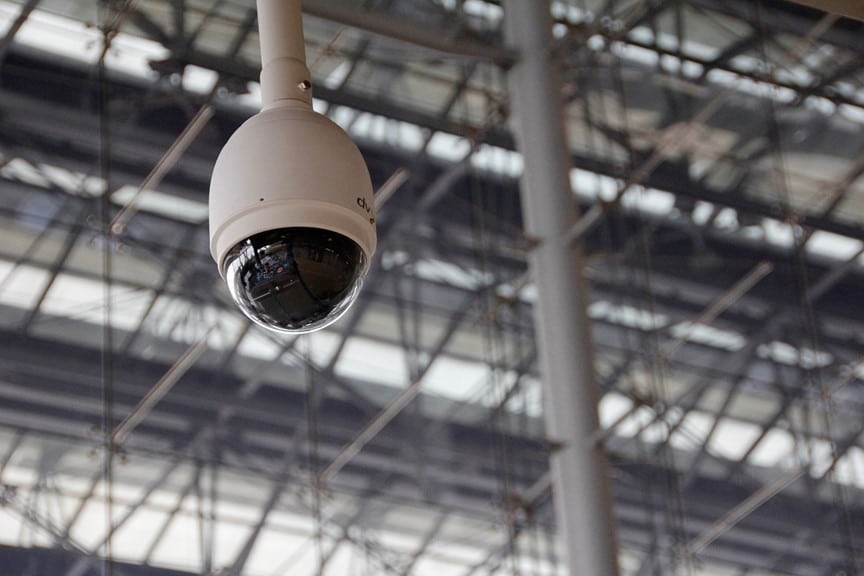Image by Peggy und Marco Lachmann-Anke from Pixabay
In today’s rapidly evolving industrial landscape, the implementation of advanced security systems has become a business imperative. Security cameras offer more than just surveillance; they provide a proactive solution to mitigate risks, safeguard operations, and drive innovation. Utilizing a Meraki camera can greatly enhance security measures, especially in industrial settings where reliability and advanced features are crucial. With cutting-edge technology and strategic placement, these systems ensure not only the protection of assets but also the optimization of operational workflows, compliance adherence, and workplace safety.
Advanced Theft Prevention and Asset Protection
Industrial facilities house high-value assets, including specialized equipment, raw materials, and finished goods, making them vulnerable to theft. Modern security cameras deter threats and deliver actionable intelligence, protecting businesses from internal and external risks.
- Prevent External Breaches: Visible surveillance systems integrated with motion-activated alerts deter unauthorized access and intrusions, reducing potential theft attempts.
- Mitigate Internal Risks: Security cameras monitor employee activities, ensuring adherence to access restrictions and reducing opportunities for internal theft or mismanagement.
- Protect Critical Assets: Real-time monitoring secures sensitive inventory and ensures high-value items remain accounted for and undamaged.
Optimized Workplace Safety
Industrial spaces often involve complex machinery and hazardous environments. Video surveillance is pivotal in promoting a culture of safety while mitigating risks associated with workplace incidents.
- Identify Safety Hazards: Cameras strategically placed in high-risk zones highlight unsafe practices or potential equipment failures before accidents occur.
- Incident Documentation and Analysis: Surveillance footage provides detailed evidence for incident reviews, enabling targeted corrective measures and improved safety protocols.
- Support Proactive Training: Recorded footage reinforces safety training, illustrating best practices and ensuring compliance with operational safety standards.
Enhanced Operational Efficiency
Security cameras are not limited to mitigating risks—they also play a critical role in refining operational workflows, ensuring smooth and productive facility operations.
- Streamline Production Processes: Cameras provide comprehensive oversight of production lines, identifying inefficiencies or bottlenecks that hinder optimal performance.
- Proactive Maintenance: Surveillance systems integrated with AI-driven analytics detect early warning signs of equipment wear or failure, preventing costly downtime.
- Time Optimization: By reviewing employee workflows, managers can implement strategies to eliminate redundancies and enhance productivity.
Ensuring Regulatory Compliance
Industries are governed by stringent regulatory requirements aimed at ensuring safety, environmental standards, and ethical practices. Security cameras simplify compliance by providing transparent oversight and verifiable documentation.
- Monitor Compliance in Real-Time: Surveillance systems ensure continuous adherence to safety protocols and operational guidelines.
- Audit-Ready Evidence: Recorded footage serves as concrete proof of compliance during regulatory inspections or legal investigations.
- Encourage Adherence: The presence of cameras promotes a culture of accountability among employees, reducing violations and associated penalties.
Effective Liability Management
False liability claims can result in significant financial and reputational losses. Security cameras act as an impartial witness, providing concrete evidence to resolve disputes and prevent fraudulent claims.
- Resolve Disputes Efficiently: Surveillance footage offers a clear account of events, enabling fair and transparent decision-making in liability cases.
- Identify Recurring Issues: Incident reviews highlight systemic gaps or recurring hazards, enabling preventive measures and policy adjustments to mitigate future risks.
Advanced Access Control Solutions
In environments where access to critical areas must be tightly controlled, integrating security cameras with advanced access systems delivers unparalleled protection and operational control.
- Seamless Integration: Modern systems combine video surveillance with biometric authentication, card readers, and other technologies for robust access management.
- Restricted Zone Monitoring: Security cameras ensure only authorized personnel enter sensitive areas, safeguarding equipment, intellectual property, and proprietary processes.
Remote Monitoring for Operational Flexibility
Innovative surveillance solutions enable facility managers to oversee operations from any location, ensuring seamless control and responsiveness across sites.
- Cloud-Based Access: Secure, remote access to live feeds and historical footage empowers off-site decision-making and enhances operational oversight.
- Multi-Site Management: Monitor multiple facilities simultaneously, ensuring consistent standards and efficient operations regardless of physical location.
Cost-Effective Risk Mitigation
Advanced security camera systems offer a measurable return on investment by reducing losses, optimizing resource allocation, and enhancing operational efficiency.
- Reduce Security Costs: Live monitoring reduces the need for extensive on-site security personnel, offering a cost-effective alternative without compromising protection.
- Insurance Incentives: Demonstrating a robust commitment to security through advanced surveillance systems can lead to lower insurance premiums.
Proactive Incident Response
Cutting-edge surveillance systems equipped with AI and analytics allow businesses to transition from reactive to proactive incident management, minimizing disruptions and protecting critical operations.
- Early Intrusion Detection: Cameras integrated with motion sensors and alert systems notify security teams of unauthorized activity in real-time, enabling swift responses.
- Proactive Issue Resolution: Early identification of minor issues—whether equipment malfunctions or delayed shipments—prevents escalation and ensures operational continuity.
- Intelligent Notifications: AI-powered systems deliver actionable insights, automatically notifying teams of breaches or anomalies for immediate intervention.
Long-Term ROI and Business Growth
Deploying a robust security camera system is a forward-looking investment that drives efficiency, mitigates risks, and supports sustained growth in a competitive industrial landscape.
- Reduce Financial Losses: Theft prevention, efficient processes, and minimized downtime translate to significant cost savings over time.
- Elevate Brand Credibility: Demonstrating a commitment to safety and innovation strengthens trust among stakeholders, partners, and customers.
- Leverage Technology for Competitive Advantage: Advanced features like AI-powered analytics, remote monitoring, and predictive maintenance position businesses as industry leaders in innovation.
Conclusion
Security cameras in industrial spaces are no longer a luxury but a necessity in today’s fast-paced, technology-driven environment. From mitigating risks and ensuring safety to enhancing operational workflows and supporting regulatory compliance, these systems deliver transformative benefits. By investing in modern surveillance technologies, industrial businesses can not only safeguard their operations but also drive efficiency, foster innovation, and achieve sustained growth.



